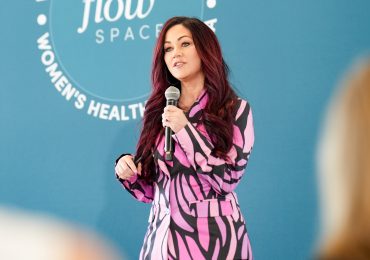By MATTHEW HOLT
This is the week where the digital health landscape debunks to the HLTH Conference in Vegas to meet, do deals, listen to superannuated rappers and generally have a great time. Speaking as the guy who ran the digital health conference before HLTH emerged, I remain extremely jealous of how Jonathan Weiner, Rich Scarfo, Jody Tropeano and team have managed to pull 10,000 people together when Health 2.0 never got past 25% of that size! (And I won’t even mention the premium price they charge!).
I have written pretty extensively about how digital health has failed to develop an alternate to the incumbent hospital, specialty & procedure-based system. 90%+ of digital health companies are now desperately trying to get the incumbents to buy their stuff. It’s as if Jeff Bezos in 1998 was going cap in hand to Barnes & Noble asking them to put in his new online ordering system.
But there is something else that HLTH has not been shy in doing, and that is giving a place on the stage for big companies to explain what they intend to do to change the health system. Amazon, Walmart. Walgreens, CVS, Optum and many more have used that premium real estate to explain what they are going to do. And much like the digital health upstarts, the reality has been very different.
Almost all of those companies’ new strategies are in deep trouble.
Amazon was going to build a hybrid telehealth/home based delivery platform. It got up and running and had some sizable employer clients. It also had a strong relationship with Crossover Health which had great worksite clinics. Not hard at all to imagine that becoming a nationwide primary care platform that could take risk and really cut into the business of the incumbent non-profit systems. After all Dave Chase at Rosetta Stone has been preaching this forever. But at the first hint of trouble, Amazon cut & run and bought One Medical. It’s as if their play in grocery was to go mass market but then they decided that they could make more money from the high end Lululemon crowd that shops at Whole Foods. Oh yeah, that was their play in grocery too.
Walmart, Walgreens and CVS were all going to create mass-market primary care, and move to accepting risk primarily from Medicare Advantage. I interviewed Walmart’s then head honcho of health care, Cheryl Pegus, on stage at HLTH two years ago when she waxed lyrical about how Walmart was the answer to the lack of primary care all over the deep South and rural America. The joke was that by the time of that panel she had already quit and was moving to fresher pastures at JP Morgan! Around a year later Walmart declared that it couldn’t staff its clinics, was losing a fortune on each one, and it tossed the whole business.
Walgreens paid a fortune for VillageMD, then even more for Summit Medical (which included CityMD in NYC). At one point in late 2021, VillageMD CEO Tim Barry told me that their main issue was the execution risk of having to open more clinics per week then Starbucks did at the height of its expansion. Walgreens made a minority investment then kept doubling down on its bet. But three years later it has written off the whole amount $8bn or so) and its stock price is in the toilet. It’s worth less now that doctor network Doximity!
Both of these companies and CVS have shown that it’s really hard just to get the basics right opening clinics in retail stores. That’s despite the fact that most Americans have no primary care doc and can’t get an appointment with a regular one, and that there’s a captive audience walking into their stores every day picking up their meds.
CVS has the added issue of trying to integrate a decent sized insurer into its operations just at the time when the Medicare Advantage gravy train looks like it is running out of steam. CVS’ CEO Karen Lynch took over Aetna recently and then this past week was dispatched to the cheap seats herself. (Don’t feel too bad for her, she’s getting $4m a year to “consult” with the board). Two things have hit Medicare Advantage. First the government is starting to look into risk adjustment upcoding. CVS, you may recall, bought Signify Health, a company specializing in sending nurses into seniors’ homes to perform said upcoding. Secondly, Medicare Advnatge plans had surprisingly little information about and control over their members who were being cared for by their non-risk bearing delivery system (which is to say, most of it). They appeared to be totally surprised that post pandemic procedure numbers ratcheted up and were powerless to stop it. Well, Wall Street noticed.
Similar problems have hit Optum, the engine behind United HealthGroup’s profitable growth for the past decade or so. It’s not just the biggest health tech company in America, it’s also the biggest medical group owner—even if CEO and bumbling Englishman Andrew Witty doesn’t seem to know how many doctors it controls. They are being exposed in Stat on a weekly basis for basically semi-frequently causing their doctors to lie about their patients’ health status, just as the Wall Street Journal accuses their associated health plan of inventing diseases and procedures—all to bill the government more. You can argue back and forth but it does appear that the strategy of buying every medical group it can see and provider fracking appears to have hit a bumpy road.
So if the venture-funded digital health upstarts are no longer changing the world, and the big retailers and Optum aren’t setting the world alight, who is taking the upper hand? Well, I expect that intermingled with the ex-pop stars and amazingly beautiful actresses on stage this week (sorry, but I love Halle Berry!), we’ll see a rash of big incumbent non- & for-profit systems. Looks that their numbers. Procedures are heading up. ERs are filling up. Operations are profitable or in some cases, very profitable, corporate jets are being bought, and “reserves” –AKA hedge funds–are growing well due to being stuffed full of Nvidia stock.
All of which leads me to believe that sadly HLTH isn’t about the future of health as much as it’s a retread of its past. Still, I’ll catch you at the parties if you’re there….
Leave a comment



